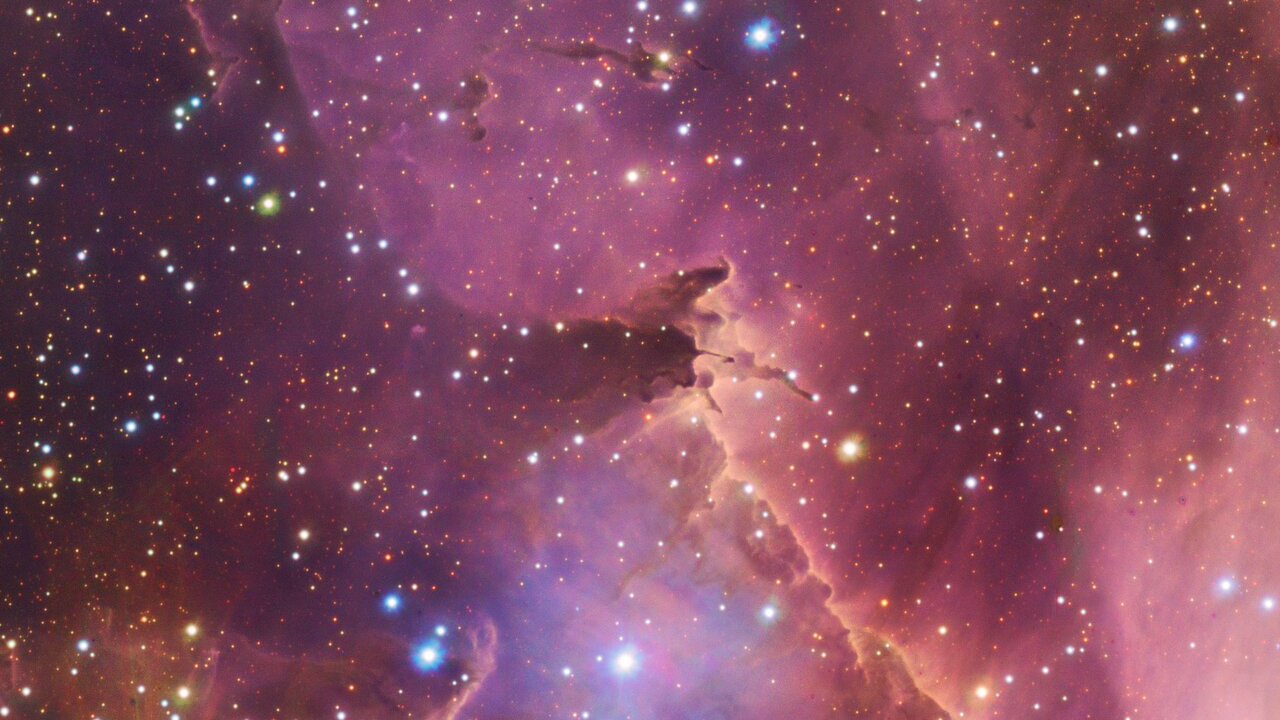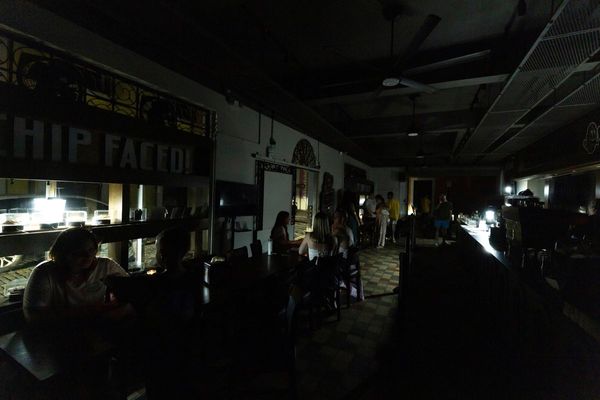
Tendrils of gas and dust arc into the abyss of space while countless stars sparkle their brightest in this image of a faraway stellar nursery. Yet as striking as the snapshot is, it seems to capture nothing in particular.
"Do you feel lost looking at this Picture of the Week?" European Southern Observatory (ESO) wrote in a statement accompanying the 1.5-billion-pixel image. Exploring this gas cloud "means finding your way across countless nascent stars born in this enormous stellar nursery."
The vast pocket of the nursery, taken by ESO's VLT Survey Telescope in Chile, indeed envelopes you. The image captures the brightest slice of the so-called Running Chicken Nebula, a distant gas cloud toward the constellation Centaurus named after its distinct fowl-like appearance. The featured region, known as IC 2948, appears to some as the cosmic fowl's head and to others as its rear end.
The IC 2948 patch is stuffed with bright gas and dust "plumage" as well as sprinkled with blue stars, the hue a telltale sign of the stellar bodies' hot and young existences. The stars are bright, but by no means merry, as ESO put it. Intense radiation the stars blast into space whooshes away nearby material, carving out the sections of space in which they reign.
"Here, we find creeping dark clouds, shaped like open hands about to grab their surrounding blooming stars," ESO said.
Telescope images of the Running Chicken Nebula and various other nebulas show there are at least a few survivors of the radiation blast: the isolated compact, dark wisps of gas and dust seen silhouetted against the nebula's bright backdrop. When German-British astronomer William Herschel first saw a globule in his telescope, he is said to have exclaimed: "Mein Gott, da ist ein Loch im Himmel." (My God, there is a hole in the sky.)
These "holes" are now called Bok globules, named after the Dutch-American astronomer Bart Bok who first observed the dark clouds in the 1940s and likened them to insects' cocoons. (The set of Bok globules in IC 2948 are specifically called Thackeray's Globules, after their discoverer David Thackeray.)
Bok posited the clouds represented the earliest stages of star formation, in that they were undergoing gravitational collapse ahead of birthing new stars in their interiors, where they would be sheltered from buffeting stellar radiation. The hypothesis was proven nearly half a century later when near-infrared observations showed evidence for multiple stars in more than 50 globules, though none of them seem to call the Running Chicken Nebula home.
The starry nebula, however, remains a stunning destination for professional and amateur astronomers alike. The nebula spans 71 light-years and covers an area of the sky as wide as 25 full moons.
"It would take an average chicken almost 21 billion years to run across it," ESO said in a previous news release. "That's much longer than our universe has been around for."







